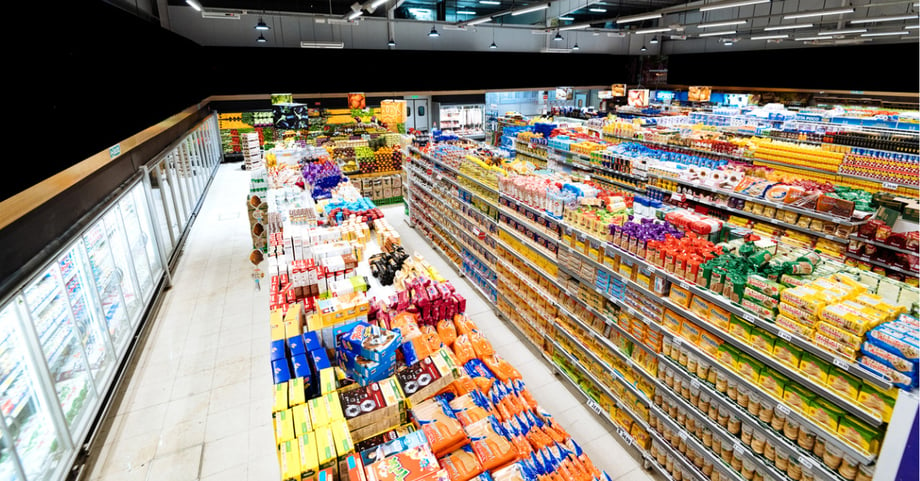
The grocery sector was arguably hit as hard by the pandemic as any and is still dealing with the most persistent hangover—namely ongoing supply shortages, inventory imbalances, and excessive spoilage and waste.
Shoppers everywhere have grown accustomed to their weekly grocery trip as a virtual “treasure hunt” among whatever products are actually on the shelves. If their preferred varieties of milk, eggs, packaged goods, or other staples aren’t available, they’ve become resigned to go without those items for the week—until their frustrations ultimately drive them towards a competitor. On the grocer’s side, chronic out-of-stocks directly equate to lost sales, while spoilage rates for fresh goods—intrinsically between 7-10 percent, even in the best of times—have become harder to wrangle than ever.
At the same time, grocery supply chains are struggling to adapt and re-calibrate inventory around online or app-based shopping, delivery, curbside pickup and other omnichannel options—which may have been necessities at the height of COVID but are now less predictable as more customers return to stores. In their ever-competitive, margin-driven world, where can grocers gain a better strategic foothold?
As with any area of retail, forecasting has always been a crucial element of the grocery business. But the tumult of the past three years has wreaked havoc on what grocers used to mostly do on their own—order quantities, store allotment, pricing and promotions, and evaluating historical performance—all factoring into projected sales. For most grocers, pinpointing those elusive “right numbers” across thousands of SKUs has become increasingly challenging.
Outmoded, inaccurate sales forecasts are rapidly giving way to demand forecasting, backed by advanced artificial intelligence and machine learning, aggregating a wealth of internal and external datapoints into right-sized on-hand inventory serving every store, every SKU, and every customer. When a foundation of data-driven insights tells a grocer what they can expect their customers will want to buy, other planning in turn becomes more reliable.
Unbeknownst to many store managers, AI is already making a game-changing difference in their own center-store aisles—for Direct Store Delivery (DSD) vendors, as my colleague Jasneet Kohli has previously discussed. From beverage companies to iconic bakery brands, algorithm-based tools have redefined predictive ordering, incorporating a wealth of granular-level daily and weekly datapoints affecting every store delivery—including projected seasonal demand, store promotion schedules, even local weather conditions.
This automated process in turn recommends an optimal order quantity for every stop on a DSD route, which drivers can readily access via a tablet-based UX interface. These AI-powered tools make the most efficient use of limited space on every delivery truck, right-sizing individual store deliveries while significantly reducing margin-killing spoilage return rates. They can also incentivize drivers and other workers for doing their jobs more efficiently.
On a scale comparable to grocery, Walgreens—a prime Antuit success story—was among the first nationwide retailers to take the bold leap into data-driven demand planning across their 9,000 store locations. A single SKU within one store which may have been once influenced by only a few variables, such as medicines during cold and flu season, may now be potentially nuanced by dozens of intricate real-time internal and external datapoints—from nearby events to local economic conditions to trending social media. This is far more information than a small army of humans and spreadsheets could manually decipher into a data-driven, profit-optimized pricing strategy.
The proven early success of AI-powered demand forecasting among CPGs and drugstores offers strong promise for better managing the larger “universe” of SKUs within the typical supermarket. Syncing inventory and allocation around anticipated customer demand can help reduce those off-putting bare spots on shelves—while at the same time preventing costly excess inventory from clogging warehouses and stockrooms.
Beyond packaged goods in the center-store, we can expect AI-powered demand forecasting to also play an emerging role in the prepared food sections of the store—the bakery and deli, offering grocers greater ability to sync right-sized quantities of raw ingredients and finished product on-hand—where freshness and variety are even more important to discerning customers.
While there may be a bit of trepidation surrounding AI these days, we can point to the positive differences it’s already made for grocers and the retail sector at large by accurately predicting consumer demand and optimizing inventory to better serve the customer—all while strengthening the bottom line.
Whether you’re a grocer or other large retailer, we’d look forward to discussing how AI-powered solutions can make a real difference toward better serving your customers. Contact us to learn more.

